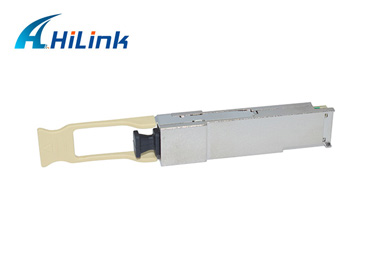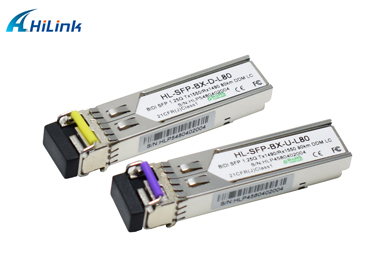Optical Transceiver Interoperability and Compatibility Guide
Jan. 18, 2023
A myriad of compatible fiber optic transceivers is used in network deployments. However, there are still concerns about quality, interoperability, and compatibility issues when selecting optical modules. In today's crowded OEM-compatible transceiver market, it is important to choose wisely. Will the optical modules I purchase work smoothly with my other modules? Are these modules compatible and working perfectly on my switch? This article will guide you through the interoperability and compatibility features of optical transceivers.
MPO 40G 850NM 100M QSFP SR4
How do I ensure that two optical modules are interoperable?
When it comes to the connection between two fiber optic transceivers, the following four factors should be considered: wavelength, speed, fiber type, and connection to the switch.
Prerequisite 1: Same wavelength
In a fiber-optic link, where data is transmitted from one end to the other, the fiber optic transceiver is responsible for converting electrical signals to optical signals and vice versa. Therefore, the optical transceiver should support the same wavelength at both ends to enable the process. Specifically, the wavelengths of the optical modules need to be matched at each end. Mismatched wavelengths can lead to loss and degradation of data transmission. For example, a 1310nm transceiver will not communicate with an 850nm transceiver. In addition, the operating modes of the modules should be matched at each end. A full-duplex transceiver should be paired with another full-duplex transceiver. If a full-duplex module is connected to a half-duplex module, the transmission will not be available.
1.25G BIDI SFP 80KM
Prerequisite 2: Same speed
It is quite possible to mix two similar-looking modules or to plug the same size transceiver into the wrong switch port. In these cases, the connection will not materialize as expected or will not work at all. Take 1G SFP and 10G SFP+ as an example. SFP modules of the same size fit seamlessly into the SFP+ port on the switch and vice versa. If an SFP+ module is plugged into an SFP port, it will work, but the transmission speed will be limited to 1 Gbps. conversely, when an SFP module is plugged into an SFP+ port, it will not connect. Therefore, most fiber optic transceivers with different speeds will not work with each other. 10GBASE-T modules are an exception and can support 1000Mbps, 2.5Gbps, 5Gbps, and 10Gbps by using Cat5e/Cat6/Cat6a cables.
Prerequisite 3: Correct Fiber Type
With the above in place - and without confusing the wavelengths supported and the speeds of the two optical modules - it is also critical to select the appropriate fiber optic cable. In general, multimode fiber optic cables can be divided into OM1, OM2, OM3, OM4, and OM5 fiber types, all for short-distance transmission. If one module is connected with OM1/OM2 fiber and another module is connected with OM3/OM4 fiber, the connection is not successful. It may be helpful to identify them by the standardized colors on the outer sheath of the fiber. If the correct fiber type is used, there is no restriction on the connector type. SC on one end and LC on the other end is possible.
Prerequisite 4: Fault-free operation of the switch
The above conditions provide a solid foundation for the next field experiments. On the one hand, make sure that the compatible module you have purchased has been tested on the original brand of a switch. For example, a Cisco-compatible fiber transceiver must be tested on a Cisco switch to avoid abnormal operations. On the other hand, make sure that your equipment will support the module you want to use. This is because some brands of switches are not readily compatible with modules from other vendors.
Contact us today or visit our website to learn more about optical modules.














